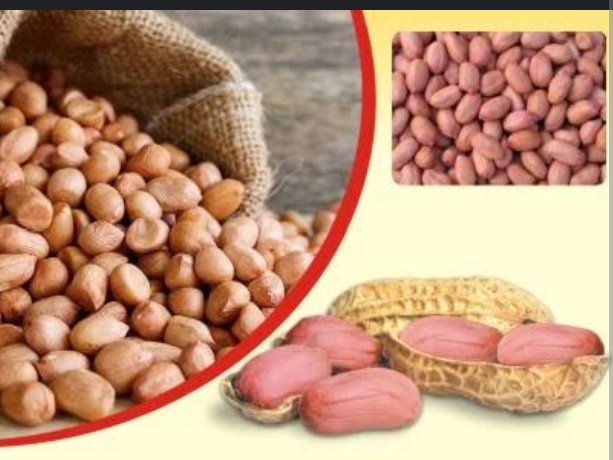Guide to Groundnut Farming 🥜
Groundnut farming, also known as peanut
farming, is a rewarding venture with its own set of unique considerations.
Whether you're a seasoned farmer or a novice ready to dive into agriculture,
this comprehensive guide will walk you through the key aspects of groundnut
cultivation.
Site Selection:
Selecting the right site is fundamental to
groundnut farming success. Opt for well-drained soil with a sandy-loam texture.
Groundnuts thrive in loose, friable soil that allows for easy penetration of
their pegs. Ensure good sunlight exposure for healthy plant development.
Example: If you're choosing between fields, go
for one with a history of successful legume crops, indicating favorable soil
conditions for groundnuts.
Varieties:
Groundnuts come in various varieties, each with
its unique characteristics. Consider factors like maturity period, disease
resistance, and market demand when selecting a variety. Popular choices include
Valencia, Virginia, and Spanish types.
Example: If you're aiming for high-quality nuts
and a relatively short growing season, Valencia varieties like 'Valencia A'
could be an excellent choice.
Field Measurement:
Accurate field measurement is crucial for
optimizing planting density. Common row spacing ranges from 24 to 36 inches,
and plant spacing within rows varies between 6 to 12 inches. Adapt these
measurements based on your chosen groundnut variety and local conditions.
Example: If your field is 2 acres, calculate
the number of rows and spacing to ensure efficient planting and maximize yield
potential.
Land Preparation:
Prepare the land meticulously to create an
ideal environment for groundnut growth. Begin with plowing and harrowing to
create a loose, well-aerated seedbed. Incorporate organic matter to improve
soil fertility and structure.
Example: Before planting, conduct a soil test
to assess nutrient levels. If phosphorus is deficient, apply a phosphorus-rich
fertilizer to promote robust root development.
Planting Time/Method of Planting:
Timing is critical for groundnut planting. Wait
until the last frost has passed and soil temperatures reach at least 65°F
(18°C). Plant seeds at a depth of 1 to 2 inches. Traditional row planting or
inverting pods directly into the soil are common methods.
Example: In regions with a short growing
season, opt for early-maturing varieties and plan the planting around late
spring for optimal results.
Soil Fertility Management:
Groundnuts have specific nutrient needs,
especially requiring phosphorus for flowering and potassium for pod
development. Conduct regular soil tests and adjust fertilizer applications
accordingly.
Example: If your soil test indicates low
potassium levels, consider using a potassium-rich fertilizer to support pod
filling.
Water Management:
Groundnuts need consistent moisture throughout
their growth stages, with increased water demand during flowering and pod
development. Implement efficient irrigation systems like drip or furrow
irrigation.
Example: Regularly monitor soil moisture levels
and adjust irrigation schedules based on weather conditions to prevent water
stress during critical growth phases.
Weed Management:
Implement a robust weed management plan using
cultivation, mulching, and the use of pre-emergence and post-emergence
herbicides. Mulching helps suppress weed growth and conserve soil moisture.
Example: Apply a layer of organic mulch, such
as straw or hay, around groundnut plants to inhibit weed growth and improve
moisture retention.
Safety Use and
Handling of Pesticides:
Prioritize safety when using pesticides. Follow
recommended guidelines, use protective gear, and store chemicals securely.
Train farmworkers on proper handling techniques and emergency procedures.
Example: Establish clear safety protocols,
including regular training sessions for farmworkers, ensuring everyone
understands the importance of safe pesticide handling.
Harvesting:
Groundnuts are ready for harvest when the
plants start to yellow, and the pods are mature. Lift the plants and allow them
to dry for a few days before harvesting. Utilize equipment like a combine
harvester for efficiency.
Example: Perform a test harvest in a small area
to determine the optimal timing for the main harvest, considering both plant and
soil conditions.
Incorporating these guidelines and examples
into your groundnut farming practices will undoubtedly pave the way for a
successful and rewarding harvest. Happy farming! 🥜
#GroundnutFarming #AgriculturalGuide
#FarmersBlog



Comments
Post a Comment